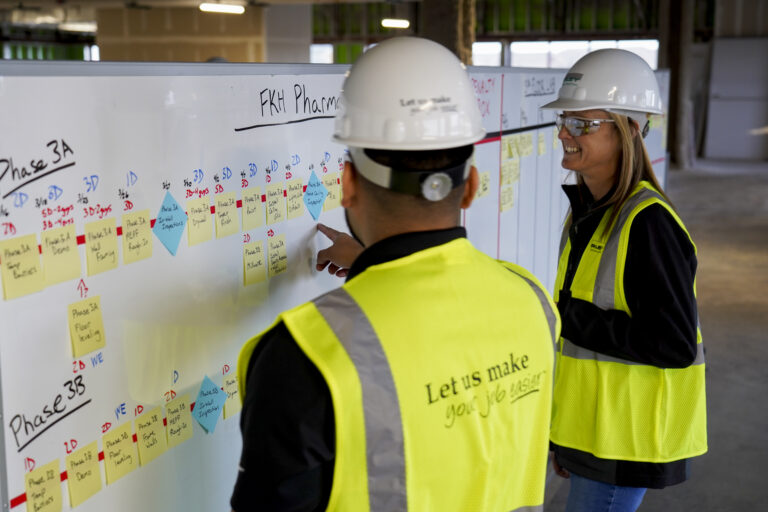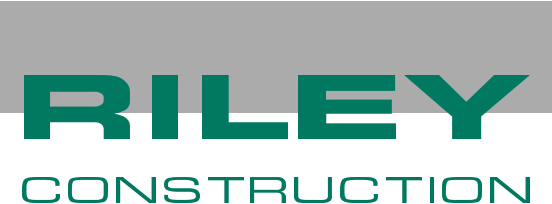Over the past few years, industrial construction has been one of the fastest-growing sectors, and long-term demand continues to look strong, according to Commercial Edge’s National Industrial Report. [1] However, short-term headwinds like rising interest rates, historically low vacancy for leasable space, and the lack of new speculative product coming online, are pushing many companies to turn to the design-build delivery method to optimize existing space or create buildings specific to their needs.
Riley Construction has extensive experience with industrial work since its founding in 1965. In the past five years, Riley has managed over 360 projects consisting of approximately 12.7 million square feet of new facilities. These projects mainly use the design-build delivery method where the architect and contractor work together throughout every phase of the project. This process eliminates uncertainty and ultimately leads to better outcomes.
Here are four reasons design-build streamlines industrial projects for efficiency and cost savings.
Single Point of Accountability
Design-build has one point of accountability. When you align the architect and contractor with a contractual arrangement, decision-making is more efficient, making change orders much less likely. Riley’s proprietary InSTEP® system also incorporates LEAN principles to identify core priorities early and customize each project’s approach. This maximizes productivity, reduces risk, and eliminates waste throughout the scheduling and planning process. It also allows Riley to provide a comprehensive schedule for the project including design, permitting, and construction durations.
A Smooth Process with Better Collaboration
 Teams that communicate and collaborate more effectively can improve productivity by 20-25%. [2] The design-build mode helps accomplish this by bringing design and construction under one contract. The architect and contractor work together from the start, providing unified project design recommendations to fit the client’s schedule and budget. With the design-build process, the designers collaborate with the builder on constructability details, materials, and sequencing of the work. This helps eliminate possible coordination issues or schedule delays during construction.
Teams that communicate and collaborate more effectively can improve productivity by 20-25%. [2] The design-build mode helps accomplish this by bringing design and construction under one contract. The architect and contractor work together from the start, providing unified project design recommendations to fit the client’s schedule and budget. With the design-build process, the designers collaborate with the builder on constructability details, materials, and sequencing of the work. This helps eliminate possible coordination issues or schedule delays during construction.
“Many of our clients have come to prefer the design-build delivery method for its speed, collaboration, and transparency. Everyone is working together towards the same goal — minimizing risk for the Owner. That early collaboration between designers and the builder streamlines the process and allows the Owner to make quick well-informed decisions with input from all parties”, said Erik Dillon, LEED AP Vice President at Riley.
Riley incorporates weekly design meetings and structure into each project and changes are addressed by the team, leading to problem-solving and innovation. This process helps to reduce last-minute surprises and eliminates changes or delays later in the process. That’s vital as construction companies attribute nearly 50% of rework to poor communications, collaboration, and data. [3]
Early Cost Predictability & Cost Savings
Design-build’s integrated approach also reaps cost benefits. In traditional construction methods, final costs only become apparent after design completion. By comparison, design-build enables contractors to estimate accurately during the design phase. This allows clients to make decisions about design elements based on budget considerations. According to the Construction Industry Institute, design-build projects are 1.9% less expensive than construction manager at risk projects on a cost-per-square-foot basis. [4]
Transparency is vital at every stage of the design-build process. Riley Construction’s team ensures that its clients are fully aware of how costs are estimated and will impact the project. This sets Riley apart from typical design-build firms who may present a concept and a budget but not a transparent look under the hood. Design-build also incorporates budget checkpoints to ensure costs do not exceed client expectations. The close collaboration between designers and builders means that the team can work together to find cost-effective solutions without compromising the project’s quality or functionality. Because builders are at the table during the design phase, materials are sourced earlier and more cost-effectively.
Faster Speed to Market
Design-build often results in faster project delivery. From design through finish, design-build projects are completed 61% faster than construction manager at risk and 102% faster than design-bid-build. [5] This is due to concurrent design and construction work that occurs when architects and builders can work together from the project’s outset. This saves times rather than waiting for everything to be finished as is the case with design-bid-build, permitting occurs as sections are completed.
Teams can also better manage schedules by ordering equipment with long lead times during the project’s early stages. They design details around large equipment and approve those details when finished. Riley recently completed a project like this where a client bought plastic injection molding machinery from Europe and needed to ensure they had the equipment operating by the time they were granted building occupancy.
Using design-build, Riley was able to work with the utility provider early to connect gas and electricity to the building. The team also modified the office footprint to ensure the machinery had adequate space and clearance. Mechanical, electrical, and plumbing connections were made before the machinery arrived. Not only was the client able to start working in the building right away, they also saved costs by preventing rework.
The design-build approach offers a more integrated, efficient, and collaborative way to execute industrial construction projects. This provides clients with streamlined processes, cost savings, and enhanced project outcomes. Riley Construction has the experience and expertise to lead your next industrial, manufacturing, and food and beverage manufacturing design-build project.
Learn more about Riley’s previous industrial and manufacturing work here. To discuss how Riley can help with your next industrial project reach out to Vice President Erik Dillon, LEED AP at erikd@rileycon.com.

